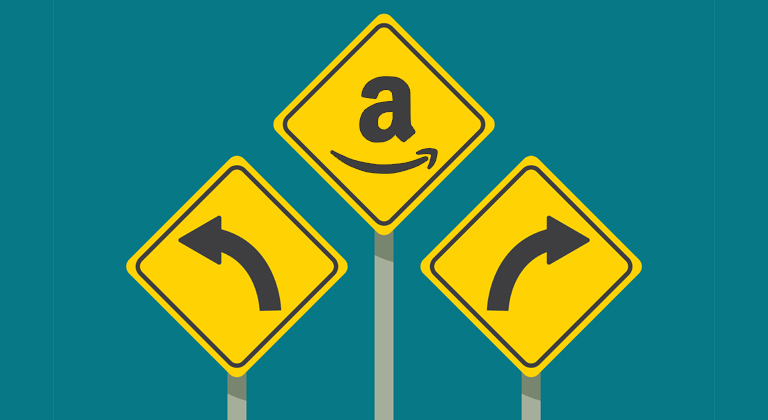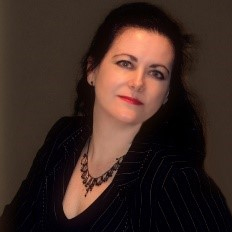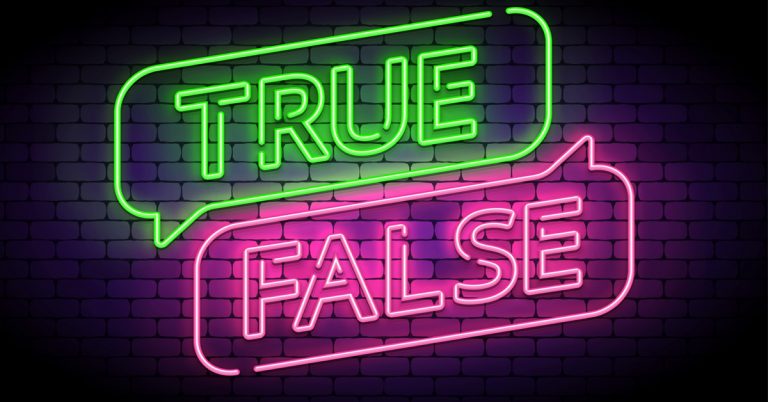Helping You Decide – Go Wide or Go KU?
The debate about whether or not to self-publish exclusively to Amazon or go wide to other online distributors is a lively one, but the fact that the question is so controversial in the first place tells us one thing for sure: That there is no right answer that works for everyone. Unfortunately, this leaves many independent authors wondering how to make that very important decision. That’s why we turned to author Tracy Cooper-Posey for advice. Not only is she a successful author and blogger, but she has experience on both sides of the debate. She’s not here to tell you which way is better, but rather to provide you with the criteria you need to consider in order to make the best decision for you and your career.
Wide V Kindle Unlimited: Is there a more contentious issue out there these days? We’ve resolved, more or less, that advertising is mandatory, that editing is standard, that cover art can’t be fudged. Even the twenty-thousand-foot dilemma of indie versus traditional publishing has pretty much dried up these days.
But get two authors in the same digital or physical space and drop Wide V KU between them, then stand back. Well back.
So…surprise! I’m not here to tell you that one is better than the other.
Why? Because I’ve been on both sides of the argument in the last twelve months. What I am about to show you is that depending on where you are as an indie author, one or the other will make greater sense for you.
But in the interests of full disclosure, I should reveal that I took all my books out of the Kindle Select program when the first Kindle Unlimited Apocalypse occurred in 2015 (about 60 books then) and remained wide right up until very late in 2019.
I was convinced by a group of very successful indie authors that KU was the way to go. In the last few weeks of 2019, I trialed the first half of my most popular series in KU. Results were stunning—I reached #2 in my category for a book that was over a year old. So despite my abhorrence for the exclusivity requirement for KU subscriptions, I rolled up my sleeves and added all 120+ books in KU.
It was terrifying watching my sales sink to single figures per day. I watched page reads like a hawk and calculated the numbers I needed to replace my sales.
On my blog, The Productive Indie Fiction Writer, I spend a lot of time explaining why testing your ideas about marketing and publishing are necessary, and how to do it – it’s the productive indie’s version of the scientific method. [Here, here and here, just to begin.]
This is the mindset I used to approach my testing of Kindle Unlimited. At the outset, I figured I would be in KU for at least a year, to get a decent sampling of data (sales, page reads, etc.).
In practice, though, I pulled the plug on all my KU subscriptions three weeks ago—barely six months into the test—and have been steadily returning my books to wide distribution as their subscriptions lapse. The process will last until late August.
Why the early abandonment?
Unfortunately, my sales and page reads did not match the early sample data. They were diminishing each and every day, to the point where I could barely afford to pay for my advertising. There were a lot more negative indicators, but I don’t want to focus on my results, because your results will be different.
There are a ton of factors that go into whether KU or wide is suitable for you, and some of them are not exactly obvious and rarely discussed by authors and publishing experts.
By the way: I do not recommend being a hybrid author to anyone. The readership, marketing and branding, even the mindset for Kindle Unlimited authors is utterly different to how a wide author thinks, operates and writes. I don’t think it’s possible to do both under a single pen name at the same time with any great success. Nor do I think an author should jump their books in and out of KU, for the same reasons. (This does not apply to books under different pen names, by the way – more on that below).
When Kindle Unlimited first swung into existence, it was possible to jump in and out, or have some books in and some out, without stressing yourself. This latest trial of mine has convinced me that the two “systems” are so far apart now, it will negatively impact your business if you try to straddle both in any way.
I believe that once you have tested the marketplace and come to a final decision, you should stick with it—Wide or KU, for the long term. Only major market upheavals or massive changes in your revenue streams, or indications of other major changes should cause you to reconsider, especially if you choose to go wide.
I am sure there are shining examples that will dispute me—authors who are doing fabulously well juggling both. They’re also examples of YMMV. (Your mileage may vary). Nothing in indie publishing works the same way for two different authors.
So let me list the criteria that will help you figure out what might work for you. These are starting points, by the way. If you research any of these points you’ll learn a lot more about publishing, your author platform, your brand and you as a writer. And then…test!
Kindle Unlimited may suit you as a writer if:
You can write and release rapidly enough to avoid the Amazon 30 Day Cliff.
That is: releasing a new title at least once every 30 days.
This doesn’t have to be a full novel, by the way. You could release a short story, novelette, novella or boxed set…but you must release something within 30 days of the last release to keep your sales rank high on both.
It’s more effective if you can release within the same series, too.
You have a lot of cash to drop on advertising your new release.
Your book must climb the ranks and build sales in a steady up-slope to nudge Amazon’s algorithms into serving your book to readers. A heavy advertising budget around release day will help with that.
You can ramp up marketing activities—all of them—for an intense two to three-week period surrounding each release, to maximize your ranks on Amazon.
Everything depends upon getting the sales spiking hard at the beginning so Amazon will promote your book for the next 30 days.
If you write 100% market-driven fiction that is also entertaining and different enough to feel novel to readers.
This is a tall order and is where writers like me are mismatched.
You must write books that KU readers want to read (and in some genres they read two books or more a day.)
KU readers are impatient: If your book doesn’t feel comfortably familiar enough, or doesn’t get into the story fast enough, they shut it down and get a different book…and you only get paid for a few pages read. They haven’t paid for the book, so there’s no investment keeping them reading, to see if the story pays off.
You have to know and understand the genre you’re writing in, what that genre’s tropes and reader expectations are, and you must deliver on both.
If you have a high tolerance for risk and for pressured highs and lows in your sales and page reads.
Everything revolves around your book’s release. In between, the sales and page reads can bottom out, which can be panic inducing.
This isn’t a game for authors who flinch easily.
If you don’t mind a) a lack of control over your pricing, your income, your promotions and your distribution, and b) that all your revenue comes from a single source.
There are many negatives in the Kindle Unlimited model, but the pay off is mind-boggling revenue…if you can make the system work for you.
It’s a gamble, with few variables that are under your control. Only a small percentage of KU authors make the big dough. Most do not.
You must bear this in mind when making your decision.
Better still: Try it for yourself. You might just be one of the lucky ones for whom all the factors come together and work beautifully.
Wide Distribution May Suit You as a Writer if:
You prefer to maintain control of everything and diversify your distribution.
As a wide author, very nearly everything is up to you: marketing, advertising, promotions, pricing, and where you will sell your books.
You’re well organized and comfortable with technology—or can make yourself so.
There are a lot of retailers and aggregators out there and their dashboards and publishing processes are all different and often require different software.
It saves money if you can format your own books, upload them yourself and can resize covers to meet a retailer’s criteria.
You also have to keep track of meta data for every book on every platform. Buy-links grow like weeds, too.
Everything you need to do as a wide author can be learned, so even if you’re not sure what PHP is, you can always find out.
You think you might like to sell directly from your site.
Not all wide authors sell directly. I do, and I love the flexibility and marketing options it gives me.
I really like earning 98% of the cover price for each sale, instead of the less-than-70% I get elsewhere. I enjoy being paid within a day or two, not 90 days later.
But you can’t sell directly if you’re in KU.
You simply cannot produce a finished title every 30 days.
The pace is slower when you’re publishing wide, although not much slower—but in KU, longer than 30 days can kill your momentum. It doesn’t have to, when you’re wide.
You’re creative about promotions, deals, discounts and marketing
The sky’s the limit when you’re wide, and it doesn’t have to cost a lot of money, either.
Cross-promotions with other authors, blog tours, giveaways, BookFunnel promotions, discount promotions, coupons…it’s endless. You can keep switching up your promotion efforts, so they don’t go stale for your readers and you.
This flexibility isn’t possible in KU.
You have, or can build, a solid author platform that includes, at a minimum, your website and email list.
Your email list will become the primary means of talking to your readers. When you are a wide author you talk to your readers far, far more than you do when you’re in KU. You’ll rub shoulders with them on social networks, too. You’ll get to actually know your readers and build a community around your books.
You write books that aren’t pure genre, or you write across several sub-genres under the one pen name.
If you mash genres, or color outside the lines even a little bit, you’re probably better off wide. Ditto, if you write several sub-genres under one name.
For example, under my real name, Tracy Cooper-Posey, I write five different types of romance; historicals, romantic suspense, science fiction romance, and paranormal romance—and these books I’m taking back to wide.
Under two other pen names, I write unadulterated genre novels in only one category for each name, and those are remaining in Kindle Unlimited…for now.
Also, a series that tanks on one platform or country might go gangbusters somewhere else. My historical romances do very well on Amazon, while readers on Kobo love my romantic suspense.
You like and are comfortable with, enjoy or desire to have an international audience across dozens of platforms.
The “wide” moniker isn’t just about where you publish.
When you’re publishing wide, your readers come from everywhere, and have different expectations and needs.
You’ll find yourself dealing with international time zones, trying to find the one that best suits the most readers.
Your readers will contact you via Facebook, Twitter, direct messages, emails, even text messages on your phone. They’ll speak English well, or badly, or barely at all (yet astonishingly, they read English—enough to be delighted by your books!).
A $2.99 book is cheap in the United States and horribly expensive in India. Readers in Germany prefer Tolino. Readers in India use Gandhi. Readers in France like FNAC.
You have to reach across these differences to all your readers. Giveaways and prizes must be deliverable to more than just the continental United States.
In return, though, you are rewarded by intense reader loyalty. Whenever I sell a copy of a book on FNAC, I can guess which of a small core of readers bought it. I’ve had readers text me and DM me when there is a disaster in Canada, just to make sure I’m okay. One of my readers makes sure I hear about every single new Sherlock Holmes pastiche that is released, as she knows my taste for the consulting detective.
You’re patient and can, or prefer to, plan in the long term.
When you first go wide, it can take up to a year to gain traction with the other retailers and their readers.
Heavy marketing and advertising for specific retailers will get you there quicker, but the intense, fast release-relax swings in both effort and income that you get in KU are missing here.
The pay-off, though, is a steadily rising, reliable income that builds slowly over years, and doesn’t evaporate the moment you take your foot off the gas.
It is possible to earn far more than half your revenue from non-Amazon sources. A trickle here and there adds up to a steady stream pouring in, sometimes every week.
Just as I suggested for the Kindle Unlimited model, I suggest the same here: Try it for yourself. Even though it takes up to a year to establish yourself as a wide author, you can still get a good idea of what it will be like in the long term within a few months of being out there.












1 Comments